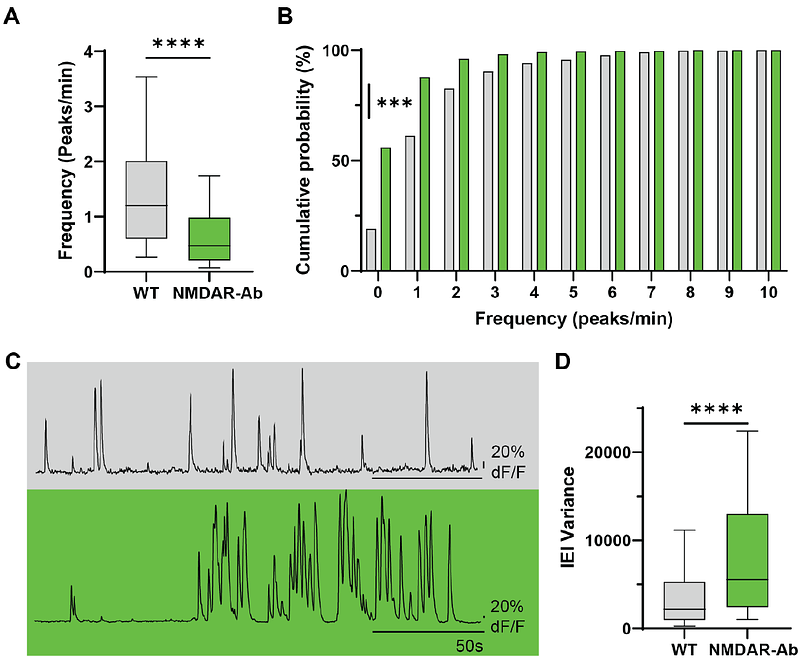Maternofetal transfer of human NMDAR antibodies leads to cortical network defect in the adult

Maternofetal transfer of human NMDAR antibodies leads to cortical network defect in the adult
Altahini, S.; Doering, J.; Kuchling, J.; Backhaus, H.; Kreye, J.; Guimaraes-Backhaus, R.; Finke, C.; Pruess, H.; Stroh, A.
AbstractIgG antibodies that bind to the N-methyl-D-aspartate receptors (NMDAR-Ab) can be detected in up to 1 % of healthy individuals. This suggests that a considerable subgroup of pregnant women is at risk of transferring NMDAR-antibodies to the fetus. We ask whether a transient in utero exposure to human NMDAR-Ab can lead to neural network defects in adulthood. In mouse model of maternofetally transferred human NMDAR-Ab, at P51, corresponding to early adulthood in humans, we conducted two-photon calcium imaging in awake behaving mice. We found that microcircuits in NMDAR-Ab exposed mice exhibited a lower spontaneous activity and increased bursty firing. Upon visual stimulation, neurons in NMDAR-Ab exposed mice had a higher orientation selectivity. In NMDAR-Ab exposed mice, a large fraction of neurons active upon visual stimulation did not fire spontaneously, and vice versa. This dissociation is in sharp contrast to the operational principles in healthy networks, in which the majority of all neurons were co-active. These findings suggest that transient in utero exposure to NMDAR-Ab shifts cortical microcircuits to a maladaptive state persisting into adulthood, characterized by a dissociation between spontaneous and visually evoked activity. Such dissociation has long been hypothesized to play a role in the development of psychosis.